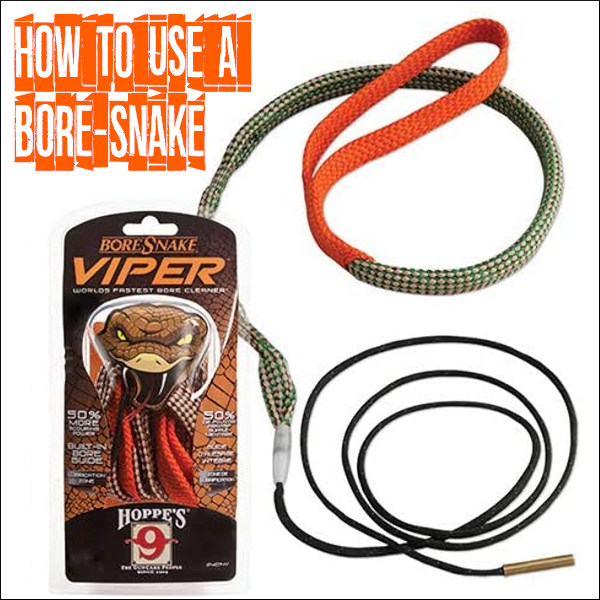In the past, the U.S. Army Marksmanship Unit’s Facebook page would regularly release “how-tos” on reloading each week. One “Handloading Hump Day’ post covered bore cleaning, specifically the use pull-through style bore snakes. Visit the USAMU’s Facebook page for more helpful tips. Barrel cleaning with Bore-Snakes We’ll switch from handloading today to rifle bore maintenance and cleaning, with information provided by the Custom Firearms Shop of the USAMU. Recently, we received some questions about bore cleaning. This seems like a good time to share. Even the best handloads will not perform to their full potential if your rifle is not properly cleaned and maintained. NOTE: Hoppes claims trademark rights on the term “BoreSnake”, which is one word without a hyphen. In this article, USAMU used the term in its hyphenated, two-word form. We believe that the USAMU is referring a Hoppes Brand Boresnake and not a different bore-cleaning rope. BORE-SNAKES – A MIRACLE REPLACEMENT TO THE CLEANING ROD?Our firearms tester and this writer’s experiences have shown that a bore-snake used properly will not damage a match barrel. To prevent crown wear, it is important to remove the bore-snake parallel to the bore direction. Bore-snakes can be very useful in certain situations (primarily for a quick, interim wipe down). In [my] opinion, they can’t replace a proper rod with brushes for a thorough clean. The experiment here is rimfire but it can be used to illustrate the point. The writer used his personal Anschutz several years ago to investigate the bore snake issue. The gun had been fired approximately 350 rounds with match ammo, and it had undergone 3 standard rod/brush cleanings. The writer then fired 300 rounds without cleaning the bore to create a “worst case” fouling condition. The writer then examined the bore using a Hawkeye borescope. The barrel was coated with a uniform grey film, with a small amount of lead buildup just ahead of the throat. Some bore-cleaning products have separate, detachable bronze brushes and bore mops. This allows for more options of usage (e.g. The brush element is easier to clean and can be used with only a mop.
The new bore-snake is then soaked in solvent and pulled through. The Hawkeye revealed the grey fouling had disappeared and that much of the visible fouling in the throat had been reduced. Nine more passes with a bore-snake were made, with Hawkeye checks after each. However, no improvement was seen in cleaning. The writer cleaned with two wet spots, observed, then used a wet bronze brush to clean residue, followed by a stroke. The Hawkeye showed significant reductions in fouling on the throat. It was almost gone. The remaining fouling was removed with a second pass using a wet bronze patch and a wet brush. The bore was not significantly improved by scrubbing it further and checking how much fouling had been removed. This test was conducted to determine what is needed to clean (and keep) the Anschutz with minimal cleaning rod usage — and therefore, minimal bore damage/wear. Fouling the bore will promote corrosion over time. This is true for a smooth, well-lubricated rimfire barrel and good ammo. This does not apply to copper-jacketed ammunition, which leaves a very stubborn fouling. It does however suggest that, while the bore-snake is a handy field-expedient and can be useful, a good rod, bronze brushes and solvents are still needed to clean a rifle barrel. [Editor’s note: Add a well-fitting bore guide to the cleaning rod.] SO, WHAT ABOUT SNAKES TO BREAK IN THE BARREL?
The goal of barrel break in is to fire every shot through a clean, unclogged barrel. This will prevent copper buildup on the barrel and give the bullets a better chance to burnish sharp edges. This seems to be the best way to achieve this goal, using your usual rods, brush and rod guides.
















